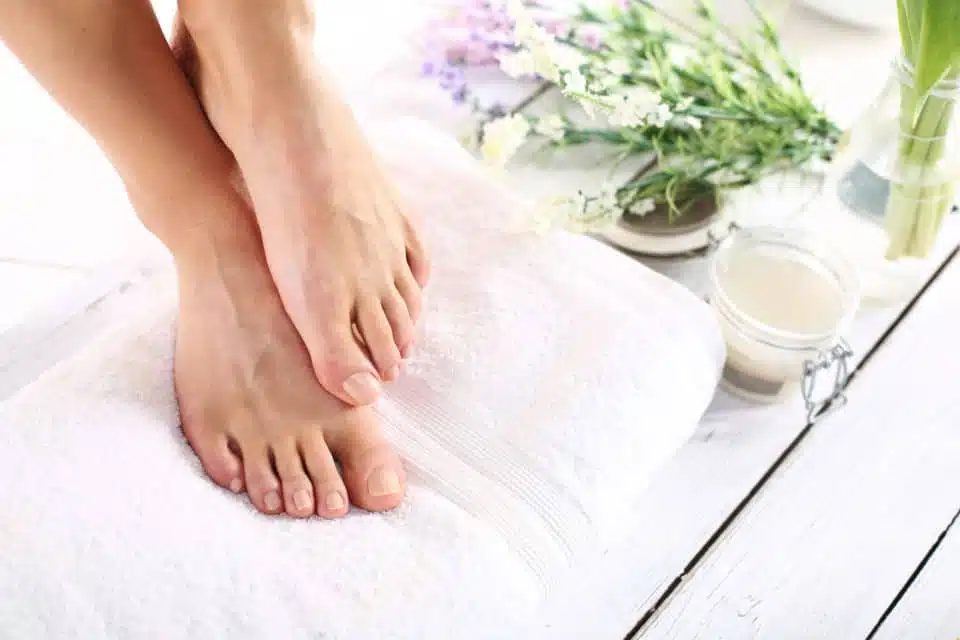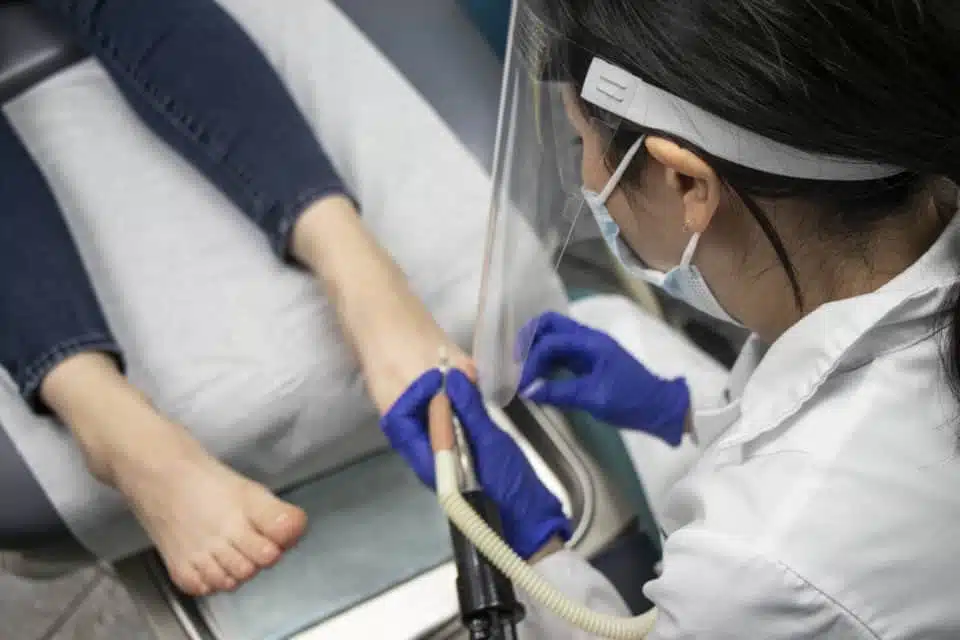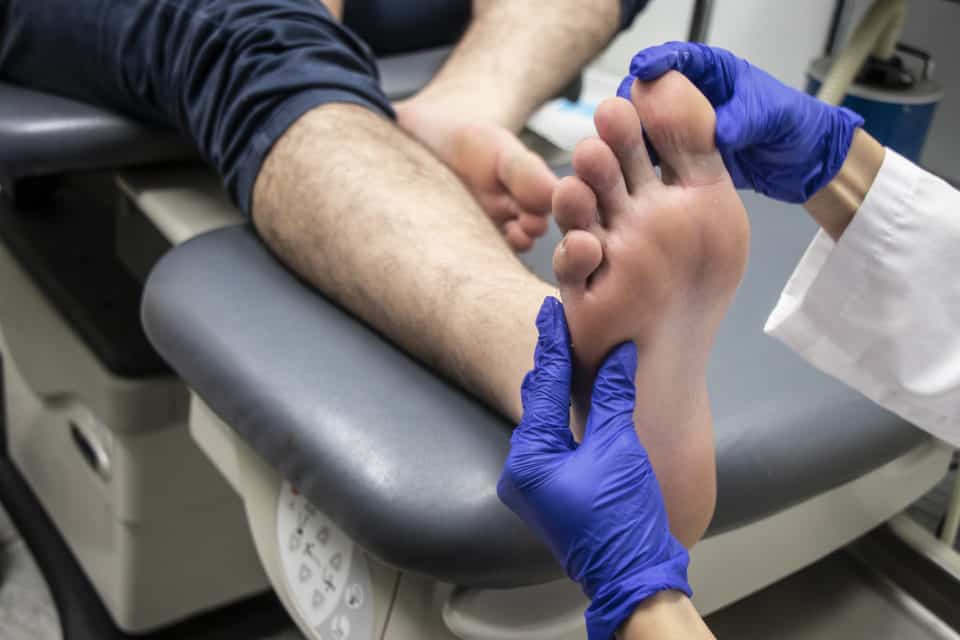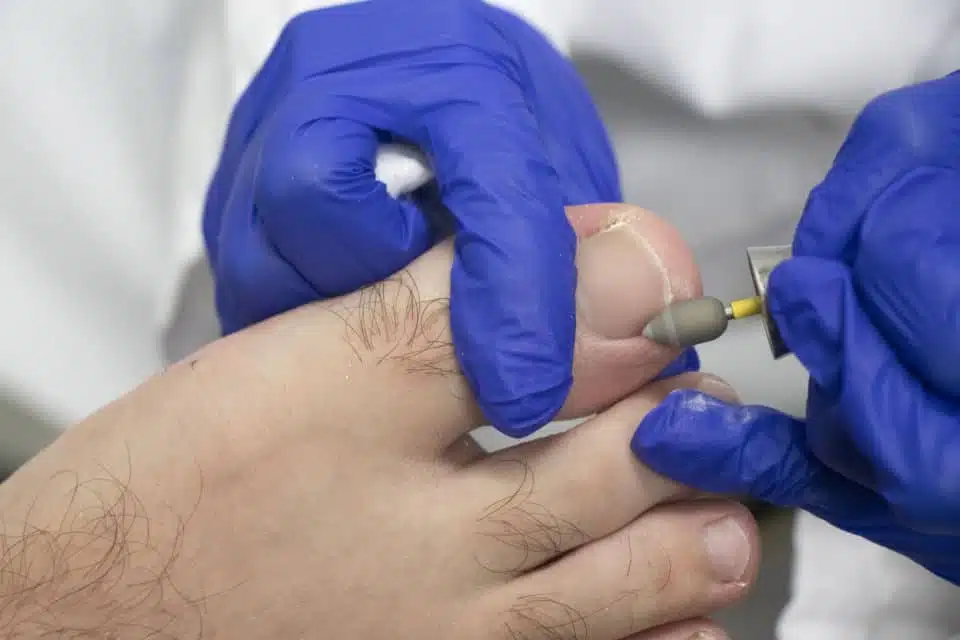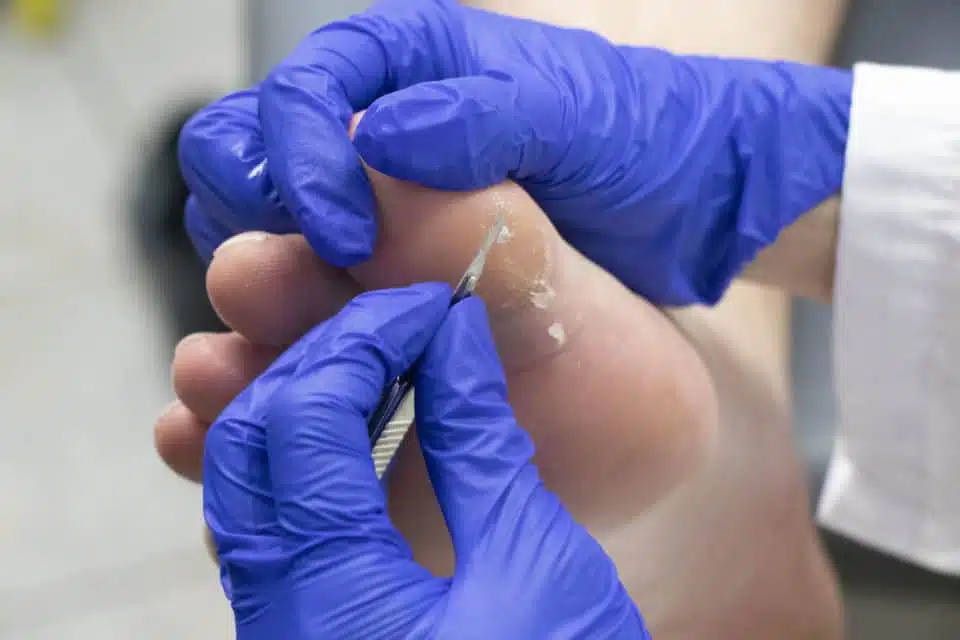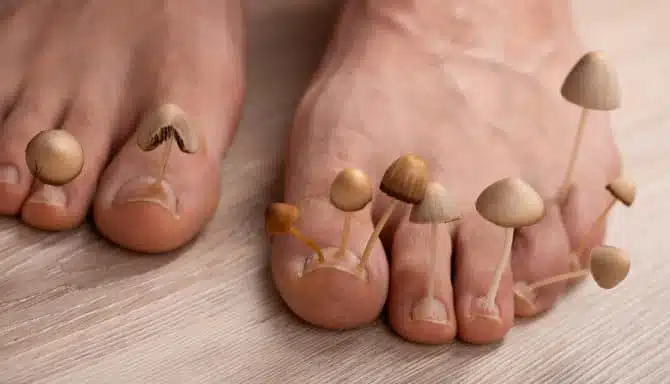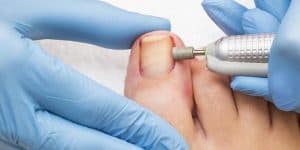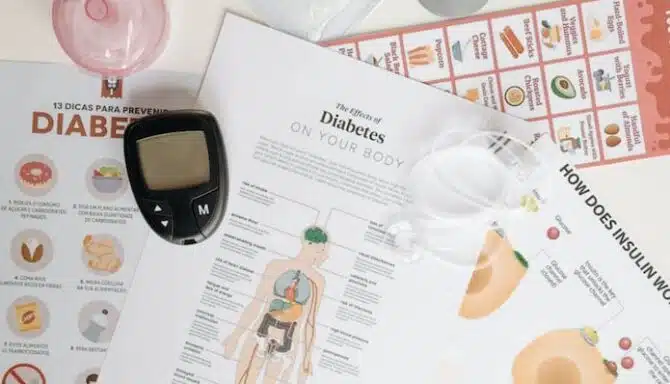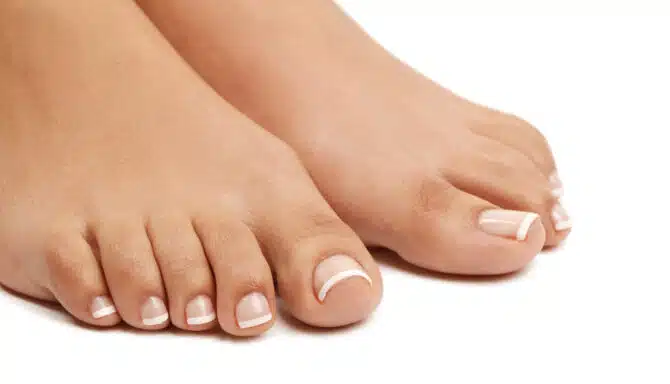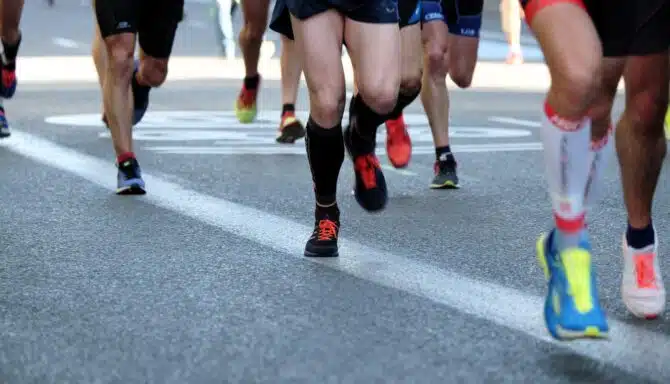With summer finally in full swing, it’s time to get your feet in tip-top shape! Get ready to show off your toes in those sexy new sandals with a medical pedicure. A medical pedicure is a great way to clean up and refresh your toes, just in time to hit the beach. Today we will discuss what happens during a medical pedicure and break down the medical pedicure process, from toenail trimming to callused skin removal.
What is a medical pedicure?
A medical pedicure is a procedure performed by your foot care specialist. During this service, the foot specialist (a chiropodist) will examine your feet and determine the best course of action to get them in pristine condition. Also known as a “medi-pedi”, a medical pedicure deals with issues that go far beyond just the aesthetics of your feet. They tackle medical concerns like ingrown toenails, calluses, corns, cracked heels, and even fungal infections.
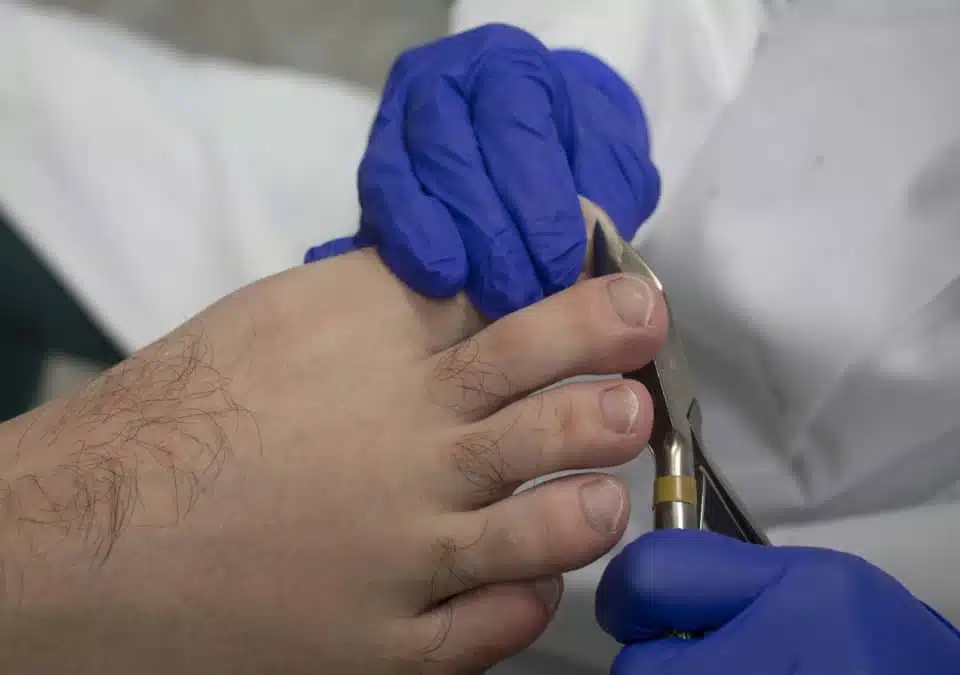
All medical pedicures are different. Your practitioner will select a foot care regimen catered to your unique needs. While a medi-pedi is still a relaxing experience that will get your feet feeling their best, their main priority is to focus on the health of your feet and prevent further medical issues from occurring.
Why choose a medical pedicure over a regular pedicure?
Unlike a cosmetic pedicure, a medical pedicure is performed by a chiropodist, who specializes in conditions affecting the feet. This makes it an excellent option for people with underlying medical conditions. If you have diabetes, cancer, or autoimmune diseases, a medi-pedi is one of your safest options. There is a minimal risk of infection, and the medical pedicure is performed in a sterile medical setting by a qualified foot specialist. A medical pedicure is not painful.
While a cosmetic pedicure’s primary focus is on making your feet look good, a medical pedicure focuses on treating the root cause of your foot issues and preventing more problems in the future. A medical pedicure looks at the condition of both your toenails and the skin of your feet. Treating underlying skin and nail issues affecting your feet allows you to experience improved foot health, which can in turn improve your overall health and make walking will be more comfortable. No nail polish is applied during a medical pedicure.
Plus, during a medical pedicure, you can ensure that you get the highest level of service that has been catered to your unique needs.
What Does the Medical Pedicure Process Look Like?
If it’s your first time receiving a medical pedicure, you may be wondering what you can expect from this service. While it may be a different experience from a cosmetic pedicure, we are confident that you will find it just as therapeutic and relaxing.
Prior to your appointment, it is important to ensure that all nail polish is removed.
Step 1: Examination
The first step of a medical pedicure is the examination. Your chiropodist will check for any underlying foot conditions affecting the skin and toenails. They will inspect your feet for cuts and infections. They will also check for any irregularities, like ingrown toenails, toenail discolouration, warts, corns or foot fungus.
Step 2: Nail Care
Next, your chiropodist will trim and file your toenails. This will ensure that they remain at the proper length to prevent ingrown nails and promote healthy, proper nail growth. The chiropodist can address any toenail concerns at this time, like toenail fungus or thickened toenails.
Step 3: Skin Care
The next step involves dealing with dry skin, corns and calluses. Over time, the friction of your feet rubbing on your shoes and the ground can cause skin build-up. This can lead to a bump on the skin, excessively dry skin, and pain when walking. Using specialized tools, your practitioner will gently remove this excess skin, leaving your feet softer and smoother than before. This process is painless. The chiropodist will then apply medical-grade moisturizer to leave your skin soft and smooth.
Step 4: Recommendations
At the end, your chiropodist will make recommendations to maintain your foot health. This can include at-home care, follow-up treatments and ongoing maintenance. If the chiropodist suspects other foot conditions (i.e.: a biomechanical issue that could be causing excessive calluses or ingrown toenails), they may also recommend a foot assessment.
After your medical pedicure is complete, your feet will feel rejuvenated and refreshed. You will be ready to show off your feet in those new, open-toe shoes and can feel confident that all your foot concerns have been adequately addressed.
